Archive for the ‘men hair restoration’ Category
Tuesday, September 10th, 2013
A miniaturization study is very important in order to know what the level of hair miniaturization is for the patient. Using this method, the Doctor can also know what rate the hair is thinning. The hair restoration surgeon can compare the hair loss area to the individual’s normal healthy hair. The hormone that causes hair to thin is known as the DHT hormone. The hairs that are not affected by the DHT hormone are in the donor area, which includes the hairs on the sides and back of the head.
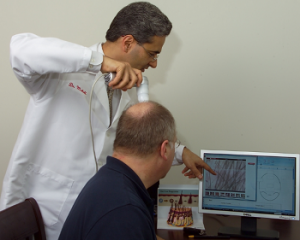 Hair goes through a cycling phase, where a hair shaft falls and after a few weeks another one begins to grow from the same follicle. In most cases the cycle won’t pass 20% of the hair shafts in any area. Hair loss will become active because the follicles of the hair go through a growth cycle. During the growth cycle process, there are resting intervals where the hairs slowly start to get thinner and miniaturization occurs. Only a small percentage of the hairs will be in resting phase. Miniaturization occurs when the hair shaft is no longer as thick as it was before. At that time the hairs become very thin and it is not seen to the naked eye. Hair goes through a cycling phase, where a hair shaft falls and after a few weeks another one begins to grow from the same follicle. In most cases the cycle won’t pass 20% of the hair shafts in any area. Hair loss will become active because the follicles of the hair go through a growth cycle. During the growth cycle process, there are resting intervals where the hairs slowly start to get thinner and miniaturization occurs. Only a small percentage of the hairs will be in resting phase. Miniaturization occurs when the hair shaft is no longer as thick as it was before. At that time the hairs become very thin and it is not seen to the naked eye.
When the hair restoration surgeon is doing the microscopic evaluation, he or she will determine the percentage of miniaturized hairs by area. When they look under the microscope at areas of the head, they estimate the percentage of miniaturization. If there is any part of the head that is over 20% miniaturization, that would be considered abnormal. That area would need to be evaluated and treated because that shows the surgeon that the patient will eventually lose the hair in that area. At that time the hair restoration surgeon will explain the different options that you have to prevent hair loss. If your hair loss has been active for a while, the Doctor can also recommended that you have a hair restoration procedure.
Tags: DHT Hormone, microscopic evaluation, miniaturization
Posted in Hair Loss, hair transplant, men hair restoration, women hair loss | No Comments »
Tuesday, April 16th, 2013
Hair transplants enhance self image.
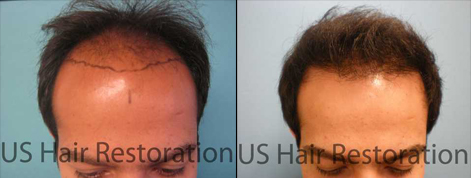
As a hair transplant surgeon women have related to me that they find men with thinning hair and baldness less attractive. Some admitted that they have actually rejected men because they were Baldness still seems to equated with lack of virility making bald men seem less masculine and therefore less attractive. The psychology of hair loss is a genuine medical problem that will effect most men throughout the world at some point in their life to a greater or lesser degree. It is certainly a medical issue worthy of attention and why hair restoration is growing.
The advances in medical technology over the past decades makes available procedures like follicular unit transplants (FUT), follicular unit extraction (FUE) and SMP hair restoration provide great opportunities for men and women to address hair loss. Hair transplants have improved greatly over the past decades. These surgical procedures now provide natural and proven results. Whether or not the hair is native or your own hair transplanted peopled do not have to live with baldness if they don’t want to; people who have who resolve their hair loss report being happier more confident.
Hair transplant are an elective surgery that improve the quality of live for many people. Los Angeles hair transplant surgeons are among the best in the world seeking a professional consult can certainly be worthwhile.
Tags: hair loss, hair transplant surgery, psychology of hair loss
Posted in Beverly Hills hair transplant, Los Angeles Hair Transplant, men hair restoration | No Comments »
Friday, January 25th, 2013
SCALP Tattooing
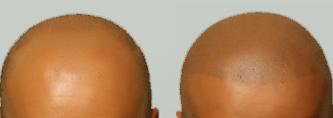 SMP- scalp micro pigmentation is a cosmetic hair restoration procedure where the patients scalp is tatooed with ink to create the illusion of shaved hair or hair stubble. This is a method sometimes preferred by bald men who are seeking an alternative to hair transplant surgery or to augment hair transplant surgery. Performed correctly SMP provides the appearance of short shaved hair to balding areas of the scalp. Like any cosmetic medical procedure the results are only as good as the surgeon performing the procedure. SMP- scalp micro pigmentation is a cosmetic hair restoration procedure where the patients scalp is tatooed with ink to create the illusion of shaved hair or hair stubble. This is a method sometimes preferred by bald men who are seeking an alternative to hair transplant surgery or to augment hair transplant surgery. Performed correctly SMP provides the appearance of short shaved hair to balding areas of the scalp. Like any cosmetic medical procedure the results are only as good as the surgeon performing the procedure.
SMP eliminates the hassle of frequent applications of a topical hair product to hide thinning, as they can be messy and be transferred onto clothing, sheets or pillow cases. SMP can be used for a variety of scalp conditions that include: genetic androgenic alopecia (AGA) otherwise known as male pattern balding (MPB), scarring alopecia’s from a variety of autoimmune diseases of the scalp (e.g. alopecia areata, alopecia totalis). SMP is very helpful and reducing the appearance of some types of scarring. It can also used to manage the unnatural appearance that is associated with older unnatural looking hair transplant procedures.
US Hair Restoration centers utilize SMP to reduce the appearance of scars to create an illusion of density and military shaved type hairstyles and other uses such as eyebrow density. Always make an educated decision before considering any permanent solution for hair restoration. If you are considering SMP consult with one of Los Angeles or Beverly Hills leading hair restoration centers.
Tags: Dr. Mohebi, scalp tattooing, SMP, us hair restoration
Posted in hair transplant, hair transplant repair, men hair restoration, women hair loss | No Comments »
Friday, December 7th, 2012
Psychological Considerations
There are many things that can adversely affect a person’s self image and consequently their self esteem. Medical science recognizes with certainty that these two factors directly impact our quality of life. Hair loss affects millions of people men and women. Amongst this group of people there is a number of individuals who undergo male pattern baldness at a very early age. The emotional impact on these individuals can be even more devastating.. Today we have more insight to the negative consequences of hair loss and that fact it can be prevented in many cases.
Study on Hair Loss Psychological Affects
“Psychology of hair restoration surgery” is a study that was presented in 15th annual scientific meeting of Internal Society of Hair Restoration Surgery in 2007. In this study we sent questionnaires to 200 men who had only one hair transplant in past and we asked them about the psycho-social aspects of their lives following their procedures. We have compared the responses from the patients with higher classes of hair loss with early stages. We also compared the changes that younger patients experienced in comparison to the older ones. We have found a significant improvement in future outlook in younger patients who received a hair restoration as opposed to the older ones. I am attaching the graph right off the presentation I had back in 2007 that compares the impacts of a hair restoration on younger patients vs. older ones.

Advanced Evaluation
Hair transplant surgeons used to have a strict criteria in past as of strictly not perform a hair transplant on anyone younger than 24. However, today there are more treatment options, as well as, more documentation on the long term effects of hair restoration medications. Hair restoration doctors did not want to do a hair transplant until they can clearly see the pattern of baldness. Modern miniaturization study with microscopic evaluation allows for more accurate predictability along with other evaluating factors. This gives us a reasonably reliable way to predict the activity of hair loss in different areas with some certainty. We can predict the final pattern of male patterned baldness (MPB) utilizing the patient’s miniaturization study in addition to a thorough evaluation of his family hair loss history.
Ethics of Hair Transplant at a young age
I recognize as many people have mentioned that there has been unethical practices in some instances. As medical doctors we must hold to the highest of ethical standards and best practices. Performing a hair transplant when the miniaturization study and the psychological profile does indicate would be a breach of these standards. I appreciate the feedback in this forum and plan to write an article on the indications and specifications of “Early Intervention for Hair Transplant Surgery” soon.
Tags: hair restoration psychology, hair transplant, psychology of hair transplant, us hair restoration
Posted in Dr. Parsa Mohebi, hair transplant, Los Angeles Hair Transplant, men hair restoration, US Hair Restoration | No Comments »
Wednesday, September 5th, 2012
 Medical Treatment for Increase Hair Loss from Androgenic Alopecia Medical Treatment for Increase Hair Loss from Androgenic Alopecia
Online sources assert that topical Spironolactone (Aldactone) can be used to reduce hair loss; as well as, Nizoral shampoo. There is not strong medical evidence supporting Spironolactone effect on reducing hair loss. Orignally developed for hypertension some level of anti-androgenic effects have been noted. Systematic use has shown effective in female hair loss depending on the type. Use in men manifested side effects of sexual dysfunction and is not recommended for treatment of androgenic alopecia in men.
Nizoral (ketoconazole 5%) is an anti dandruff medication with antifungal properties. There are some indicators that it can affect hair loss in male patterned baldness. Presently it does not have FDA approval nor does Sprionolactone.
The only FDA approved medications for hair loss treatment are Minoxidil and finasteride. Nizoral is not one of the FDA approved medications for hair loss treatment. A daily regimen of finasteride with Minoxidil is effective for many men. Minoxidil is recommended to be used twice a day, some find positive results with just a once a day application. Minoxidil does not double up the effect of finasteride but can add to it as an adjunct treatment.
Tags: Finansteride, hair loss, hair loss treatment, men hair loss, minoxidil, Parsa Mohebi, parsa mohebi md
Posted in hair loss products, Los Angeles Hair Transplant, men hair restoration | No Comments »
Thursday, July 5th, 2012
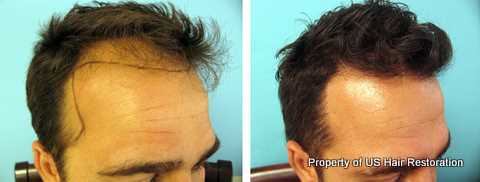
Follicular Unit Transplants (FUT) has come of age. This advanced type of modern hair restoration provides patients with a natural, proven and permanent hair loss solution. Many people do not understand that FUT hair restoration is available in two distinct forms of hair transplant surgeries. They are
- the ‘Strip Method’ and
- ‘Follicular Unit Extraction’ method
Both these procedures consist of transplanting hair from the permanent zone. This is the area of the scalp where hair loss does not occur. The harvesting method in each procedure is different. This blog is particularly devoted to the ‘Strip Method.”
Strip Method Hair Transplants
In this form of FUT hair restoration surgery a donor strip is taken from the back of the patients scalp. The size of the donor strip is determined in the patient’s pre-op consult and microscopic evaluation. The donor strip is removed by your hair transplant surgeon and separated into naturally occurring follicular grafts of 1, 2, 3 and 4 hairs. These grafts are meticulously and artistically placed in recipient incisions made by your doctor in the balding areas. Below are some of the advantages that patients who elect the FUT strip method enjoy.
Advantages of FUT Strip Hair Transplant
- Maximization of the number of grafts that can be harvested in a single hair transplant session. This advance technique allows for the transplanting of over 3500 grafts. Many patients who have never had a hair transplant can complete their hair restoration in a single surgery.
- Damaged to hair grafts is minimized. The strip procedure allows the surgical team to harvest and process the grafts under microscope effectively reducing transection (damaging hair follicles).
- The surgery is less labor intensive then its FUE counterpart and can be elected at a more affordable cost.
Tags: Dr. Mohebi, fue, hair transplant, hair transplant surgery, us hair restoration
Posted in Dr. Parsa Mohebi, hair transplant, men hair restoration | 2 Comments »
Tuesday, February 21st, 2012
 We receive a lot of questions at US Hair Restoration about the use of Minoxidil (Rogaine), and how it affects hair growth after a hair transplant procedure. There are mixed reviews people find on the internet through different websites and blogs about the Foam version of Rogaine. Some say it helps hair growth, others say it hinders, while some claim it does absolutely nothing. We receive a lot of questions at US Hair Restoration about the use of Minoxidil (Rogaine), and how it affects hair growth after a hair transplant procedure. There are mixed reviews people find on the internet through different websites and blogs about the Foam version of Rogaine. Some say it helps hair growth, others say it hinders, while some claim it does absolutely nothing.
Minoxidil (Rogaine) may be used after a hair transplantation on the newly transplanted area, for protecting the already existing hairs which are genetically predisposed to thinning. The hair grafts which are actually transplanted from the donor area require no medication for growth and maintain a permanent residence in the balding area. Those are the healthy hairs which are not affected by the hormone DHT (Dehydrotestosterone) which causes thinning and baldness.
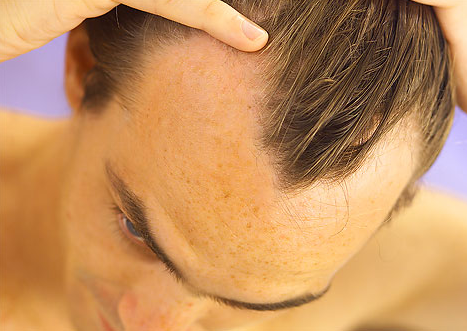 There may be some loss of existing native hair in the balding area due to shock loss, and for this we recommend Propecia for male patients to protect against. Propecia is proven to work better then Rogaine for the prevention of shock loss in men, and continues to have remarkable results in the patients who use the medication as directed. Unfortunately it does not work on women, but in these cases Rogaine does work and is a recommend option for the first few months after hair restoration surgery. There may be some loss of existing native hair in the balding area due to shock loss, and for this we recommend Propecia for male patients to protect against. Propecia is proven to work better then Rogaine for the prevention of shock loss in men, and continues to have remarkable results in the patients who use the medication as directed. Unfortunately it does not work on women, but in these cases Rogaine does work and is a recommend option for the first few months after hair restoration surgery.
Tags: female hair loss, finasteride, Male Hair Loss, minoxidil, propecia, rogaine, shock loss
Posted in after hair transplant, hair loss complications, hair loss medication, men hair restoration, women hair loss | No Comments »
Friday, October 21st, 2011
 Hair loss and hair thinning is a result of testosterone formed in different areas like the prostate gland or hair follicles, which is converted to Dihydrotestosterone (DHT) in the scalp area. Hair follicles prone to genetic male patterned baldness contain DHT receptors, thus thinning hair and loss of hair can result. Over time men produce an abundance of DHT and the molecules affect their hair follicles and cause a decrease in size and eventually see their natural hair fall out permanently. Because of this common occurrence, hair loss in men is frequent. Hair loss and hair thinning is a result of testosterone formed in different areas like the prostate gland or hair follicles, which is converted to Dihydrotestosterone (DHT) in the scalp area. Hair follicles prone to genetic male patterned baldness contain DHT receptors, thus thinning hair and loss of hair can result. Over time men produce an abundance of DHT and the molecules affect their hair follicles and cause a decrease in size and eventually see their natural hair fall out permanently. Because of this common occurrence, hair loss in men is frequent.
DHT and hair loss from having the gene for male pattern baldness are the most common factors for male pattern baldness. Women suffering from female-pattern baldness, unlike their counterparts with male-pattern baldness, are not usually characterized by higher production rates of DHT from lower levels of testosterone. On the other hand, if for a number of possible reasons, a woman has increased testosterone, she can develop female patterned baldness like a man does through the same mechanism.
Hair in the prone areas to male patterned baldness: Corners, top, and crown are filled with DHT receptors in men who suffer Androgenic Alopecia The hair on donor areas such as back and sides, however, have fewer DHT receptors. This is precisely why hair is more permanent on the sides and back and not the top and front.
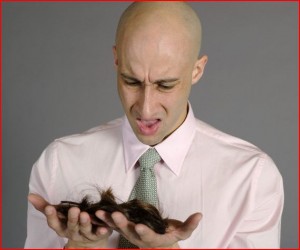
The distinction in the hair quality of different areas, such as the donor and recipient areas, allows for hair loss surgeons to remove the hair from one area and transplant it to the bald portions of the scalp. These newly transplanted hairs are permanent and immune to DHT. Finasteride (Propecia) is a drug which blocks the conversion of testosterone to DHT as a result of it blocking the enzyme alpha reductase. The amount of DHT in hair loss patients decrease when they are on Propecia and this helps to maintain healthy hair, and also helps some of the miniaturized hair become stronger.
We at US Hair Restoration often recommend medical treatment with DHT blockers in many of our patients who undergo a hair transplantation procedure in order to help maintain their own hair in addition to the newly restored, formerly balding areas because of a hair restoration surgery.
Tags: androgenetic alopecia, dht, DHT blockers, DHT receptors, dihydrotestosterone, female patterned baldness, finasteride, hair restoration surgery, propecia, testosteron
Posted in hair loss complications, Hair Loss Conditions, hair transplant, men hair restoration, women hair loss | No Comments »
Friday, September 16th, 2011
There are times when patients suffering from the more advanced stages of balding require a second hair transplantation surgery to complete the process. The question many of these particular patients have is what the time lapse is between the first and second surgeries.
 This depends on if there is density which needs to be added to the already transplanted areas. If so, there needs to be at least six months which has passed since the original surgery. This is because after six months there is more complete growth from the first hair transplantation, and a touch up in the already transplanted areas will bring more complete results. The amount of hairs transplanted in the second surgery is typically less than the first since the scar from the first surgery is removed a second time. Overall, the greater the density in the transplanted areas, the better the hair restoration will look long term. This depends on if there is density which needs to be added to the already transplanted areas. If so, there needs to be at least six months which has passed since the original surgery. This is because after six months there is more complete growth from the first hair transplantation, and a touch up in the already transplanted areas will bring more complete results. The amount of hairs transplanted in the second surgery is typically less than the first since the scar from the first surgery is removed a second time. Overall, the greater the density in the transplanted areas, the better the hair restoration will look long term.
Tags: advanced stages of balding, hair transplantation surgery, second hair transplantation surgery
Posted in hair transplant, Hair Transplant Procedure, men hair restoration, Second hair transplant procedure, Uncategorized | No Comments »
Thursday, August 25th, 2011
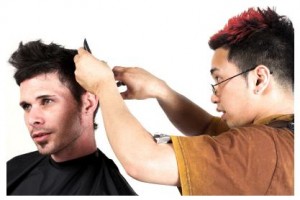 There are times when I receive inquiries as to why professionals such as hair stylists and dermatologists do not recommend hair restoration surgery to their clients or patients. I have scratched my head to this quandary as to why this is, since hair restoration surgery is the only method which is proven, permanent, and natural! The fact is, when it is done by a skilled hair restoration surgeon, the final product looks GREAT!!! There are times when I receive inquiries as to why professionals such as hair stylists and dermatologists do not recommend hair restoration surgery to their clients or patients. I have scratched my head to this quandary as to why this is, since hair restoration surgery is the only method which is proven, permanent, and natural! The fact is, when it is done by a skilled hair restoration surgeon, the final product looks GREAT!!!
In the past twenty years, hair restoration surgery has progressed significantly, but with the most noticeable changes happening in only the past five years. The most profound breakthrough in this time is the current method of dissecting hair grafts to maximize accuracy for long-term growth as well as the ability to transplant larger quantities of hair grafts (up to 5,000 in one sitting) which is known as a giga-session.
Unfortunately many stylists, and shockingly physicians as well, are not up to speed with modern hair transplantation techniques or the positive effects a surgery can have on their clients or patients. It is our goal at US Hair Restoration to continue to educate physicians, hair stylists, and the public about the science and art of current hair transplantation techniques.
We are intentional about inviting professionals such as physicians and hair stylists to hear about our services, witness a live surgery, and see life changing results just months after an operation. This knowledge helps them to be more informed of how to better direct their clients and patients. When it comes to hair and hair loss in general, hair stylists are seen as having great credibility for making suggestions. At US Hair Restoration we have a progressive campaign for educating them called the “LA’s Top Style List” and we believe our message will be made known.
Tags: dermatologists, giga session, hair grafts, hair loss, hair restoration surgery, hair stylists, hair transplantation techniques, LA’s Top Style List, modern hair transplantation techniques, us hair restoration
Posted in hair transplant, Hair Transplant Procedure, hair transplant repair, men hair restoration | No Comments »
|
|
 Hair goes through a cycling phase, where a hair shaft falls and after a few weeks another one begins to grow from the same follicle. In most cases the cycle won’t pass 20% of the hair shafts in any area. Hair loss will become active because the follicles of the hair go through a growth cycle. During the growth cycle process, there are resting intervals where the hairs slowly start to get thinner and miniaturization occurs. Only a small percentage of the hairs will be in resting phase. Miniaturization occurs when the hair shaft is no longer as thick as it was before. At that time the hairs become very thin and it is not seen to the naked eye.
Hair goes through a cycling phase, where a hair shaft falls and after a few weeks another one begins to grow from the same follicle. In most cases the cycle won’t pass 20% of the hair shafts in any area. Hair loss will become active because the follicles of the hair go through a growth cycle. During the growth cycle process, there are resting intervals where the hairs slowly start to get thinner and miniaturization occurs. Only a small percentage of the hairs will be in resting phase. Miniaturization occurs when the hair shaft is no longer as thick as it was before. At that time the hairs become very thin and it is not seen to the naked eye.

 SMP- scalp micro pigmentation is a cosmetic hair restoration procedure where the patients scalp is tatooed with ink to create the illusion of shaved hair or hair stubble. This is a method sometimes preferred by bald men who are seeking an alternative to hair transplant surgery or to augment hair transplant surgery. Performed correctly SMP provides the appearance of short shaved hair to balding areas of the scalp. Like any cosmetic medical procedure the results are only as good as the surgeon performing the procedure.
SMP- scalp micro pigmentation is a cosmetic hair restoration procedure where the patients scalp is tatooed with ink to create the illusion of shaved hair or hair stubble. This is a method sometimes preferred by bald men who are seeking an alternative to hair transplant surgery or to augment hair transplant surgery. Performed correctly SMP provides the appearance of short shaved hair to balding areas of the scalp. Like any cosmetic medical procedure the results are only as good as the surgeon performing the procedure. 
 Medical Treatment for Increase Hair Loss from Androgenic Alopecia
Medical Treatment for Increase Hair Loss from Androgenic Alopecia


 Hair loss and hair thinning is a result of testosterone formed in different areas like the prostate gland or hair follicles, which is converted to Dihydrotestosterone (DHT) in the scalp area. Hair follicles prone to genetic male patterned baldness contain DHT receptors, thus thinning hair and loss of hair can result. Over time men produce an abundance of DHT and the molecules affect their hair follicles and cause a decrease in size and eventually see their natural hair fall out permanently. Because of this common occurrence, hair loss in men is frequent.
Hair loss and hair thinning is a result of testosterone formed in different areas like the prostate gland or hair follicles, which is converted to Dihydrotestosterone (DHT) in the scalp area. Hair follicles prone to genetic male patterned baldness contain DHT receptors, thus thinning hair and loss of hair can result. Over time men produce an abundance of DHT and the molecules affect their hair follicles and cause a decrease in size and eventually see their natural hair fall out permanently. Because of this common occurrence, hair loss in men is frequent.
 This depends on if there is density which needs to be added to the already transplanted areas. If so, there needs to be at least six months which has passed since the original surgery. This is because after six months there is more complete growth from the first hair transplantation, and a touch up in the already transplanted areas will bring more complete results. The amount of hairs transplanted in the second surgery is typically less than the first since the scar from the first surgery is removed a second time. Overall, the greater the density in the transplanted areas, the better the hair restoration will look long term.
This depends on if there is density which needs to be added to the already transplanted areas. If so, there needs to be at least six months which has passed since the original surgery. This is because after six months there is more complete growth from the first hair transplantation, and a touch up in the already transplanted areas will bring more complete results. The amount of hairs transplanted in the second surgery is typically less than the first since the scar from the first surgery is removed a second time. Overall, the greater the density in the transplanted areas, the better the hair restoration will look long term.